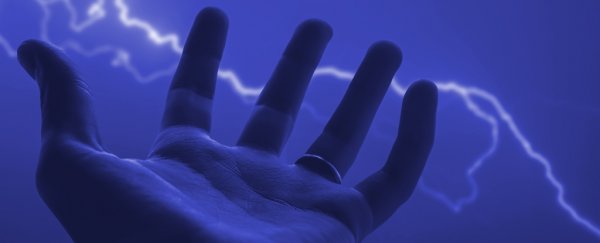There's an idea in the popular imagination that being struck by lightning is an extremely rare way to go. Statistically speaking, there is some truth to that.
Nonetheless, fatal lightning strikes, rare or not, are still a rampant source of human misery every year. At least 4,500 people are known to be killed by lightning each year, though by some estimates the figure could stretch into the tens of thousands.
Thing is, we really don't have good data on death by natural electrocution. With many strikes occurring in remote places, evidence of such a death isn't always easy to collect.
When a body is struck by lightning, a lot of different things happen. For those who do not survive the ordeal, a range of physical evidence is left on their bodies that can identify the cause of death: damage to the skin, including sometimes burn marks, as well as trauma to various organs.
But what if all the tissue decomposes? From the standpoint of forensic scientists who may only have bones to work with, does lightning leave any discernible trace behind on a skeleton?
According to a new study, yes it does.
 (Nicholas Bacci & Hugh Hunt, Wits University)
(Nicholas Bacci & Hugh Hunt, Wits University)
Above: A sample of bone before, during, and after (left to right) current was applied to it, during the setup of the experiment.
"Our work is the first research that identifies unique markers of lightning damage deep within the human skeleton and allows us to recognize lightning when only dry bone survives," says forensic anthropologist Nicholas Bacci from Wits University in South Africa.
In previous experiments, Bacci and fellow researchers identified these unique markers in animal bones, noting "extensive micro-fracturing and fragmentation of the bone matrix" in pig bones subjected to high impulse current, simulating the electrical jolt of a lightning bolt.
In that study, the same kind of micro-fracturing was also seen in the bones of a wild giraffe that was killed by a lightning strike, but it remained unclear whether human skeletons exposed to lightning-levels of current would reveal the same gruesome signature.
With the aid of cadavers donated to science, we now have our answer, with the researchers observing similar patterns of micro-fracturing in human bone subjected to the current application, and of a kind that's distinct from purely thermally induced changes to bone (such as bones burnt in a fire).
"[The lightning damage] takes the form of cracks which radiate out from the center of bone cells, or which jump irregularly between clusters of cells," says forensic anthropologist Patrick Randolph-Quinney from Northumbria University in the UK.
"The pattern of trauma is identical even though the micro-structure of human bone is different from animal bone."
 (Patrick Randolph-Quinney, Northumbria University/Tanya Augustine & Nicholas Bacci, Wits University)
(Patrick Randolph-Quinney, Northumbria University/Tanya Augustine & Nicholas Bacci, Wits University)
Above: Patterns of micro-trauma and micro-fractures in human bone and in a giraffe bone.
While the patterns are the same, their intensity depends on the source, and the wild giraffe killed by actual lightning showed "a markedly higher occurrence of micro-fracturing and more irregular micro-fractures overall" than the human bones, the team explains in their paper.
Another expected differentiator affecting micro-fracture propagation in human skeletons is bone density, which decreases with age after people reach about 40 years of age, and which might be susceptible to greater amounts of lightning-induced fracturing due to bones being more brittle.
According to the researchers, a two-fold mechanism explains why the micro-fractures in bones form the way they do.
"Firstly, the current itself produces a high-pressure shock wave when traveling through the bone," members of the research team explain in an article written for The Conversation.
"Lightning specialists term this barotrauma: the passage of electrical energy literally blows bone cells apart."
The second mechanism is an example of the piezoelectric effect, affecting how bone behaves when it's in an electric field.
"Collagen, the organic part of bone, is arranged as fibers or fibrils," the researchers explain.
"These fibrils rearrange themselves when a current is applied, causing stress to build up in the mineralized and crystallized component of bone, in turn leading to deformation and cracking."
For forensic pathologists, the discovery of the micro-fracture patterns could indeed be a "smoking gun", indicating the probable cause of death in mysterious fatalities where no other evidence remains.
For the rest of us, if we want to avoid sustaining these microscopic ruptures ourselves, it's best to stay inside whenever the weather looks like it could turn deadly.
After all, even if lightning (almost) never strikes twice, it often only needs once.
The findings are reported in Forensic Science International: Synergy.
